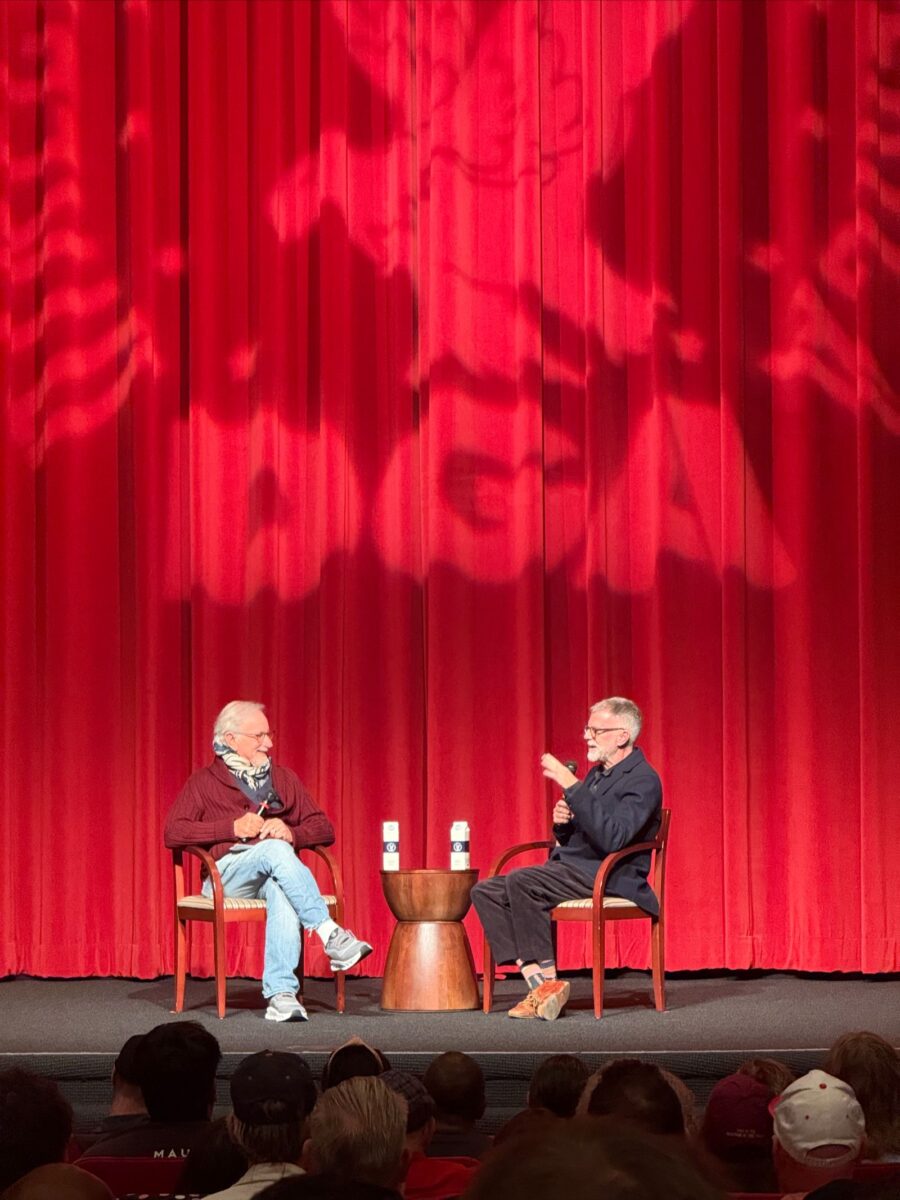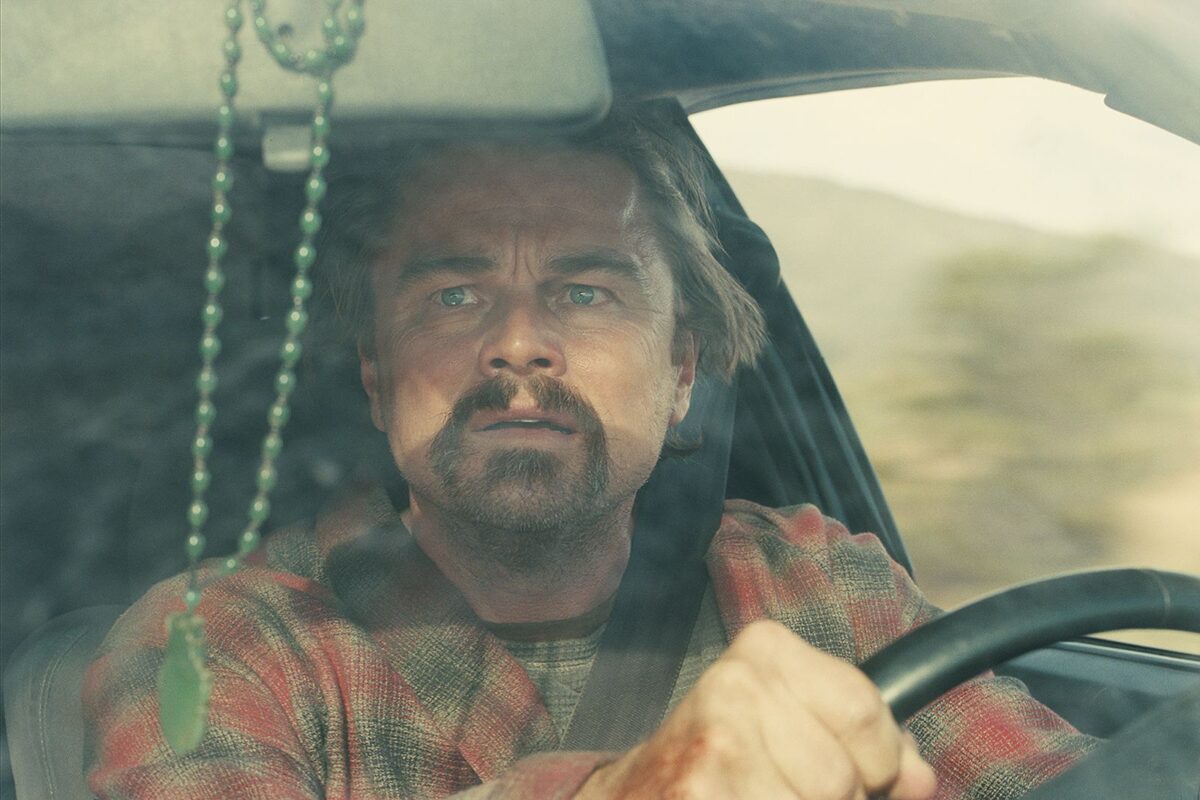With less than three weeks until the release of Paul Thomas Anderson’s One Battle After Another, the director has finally unveiled his highly anticipated epic ahead of the official Los Angeles premiere tonight. Last night at the DGA theater in L.A., Anderson screened the film, followed by a conversation with none other than Steven Spielberg, who had seen it three times already.
The pair discussed the adaptation process, casting Leonardo DiCaprio, Sean Penn, and Benicio del Toro, the Stanley Kubrick film Spielberg would compare it to, shooting on VistaVision, and much more. We’ve excised all the plot details and spoilery bits from the conversation, so enjoy the highlights below ahead of the September 26 release.
“What an insane movie, oh my God. There is more action in the first hour of this than every other film you’ve ever directed put together. Everything, it is really incredible,” kicked off Spielberg. “This is such a concoction of things that are so bizarre and at the same time so relevant, that I think have become increasingly more relevant than perhaps even when you finished the screenplay and assembled your cast and crew and began production. What was it about the Thomas Pynchon book that first sort of set you off?”
“Well, the core of the story is a great one. It’s an ex-revolutionary [who] ends up in the woods raising a daughter, and the past is going to come back and haunt him. There’s a similar love triangle in that story as well,” answered Paul Thomas Anderson. “And I loved that book. I loved it, and I loved it so much that I thought about adapting him. But the problem with loving a book so much when you go to adapt it is that you have to be much rougher on the book to adapt it. You have to kind of not be gentle. So I struggled for years to try to adapt it. Then when I had a lot of other pieces, some other stories, I started to combine them. And I kept the things that I loved the most about the book, and the things I loved the most was the father-daughter story. I think even before I had kids, I kind of felt a connection to how this father felt about his daughter. And it only grew deeper and stronger as I have had kids to understand what he was writing about in that way. And I’m trying to take from the book what I needed and pursue my own path and let it move in directions that it seemed that it wanted to go.”
Anderson also touched on the inspiration behind one scene featuring Leonardo DiCaprio’s character prodding a friend who comes to pick up his daughter: “Well, I must give credit where credit’s due. I had heard a story about Sean Penn and his eldest daughter had a suitor come over, and while his daughter was getting ready, the kid is sitting there, and he said, ‘So how are you doing?’ And she said, ‘Good.’ [Penn said], ‘So you take my daughter out?’ He said, ‘Yes.’ [Penn said],’ ‘So listen, whatever you do to her, I’m going to do that same exact thing to you when you come home. So think about how you behave out there tonight.’ I thought that was a terrific line.”

On casting DiCaprio and Penn, Anderson said he had them in mind early, noting, “Well, it was impossible to not keep thinking of both of them [when writing] because, you know, as much as you’re trying to kind of imagine a character. [I’d worked with Sean in Licorice Pizza] and I wanted to work with him in a very meaty way for as long as I can remember, as long as the first time I saw him on screen, I wanted to get ahold of him. When you saw him as Spicoli [in Fast Times at Ridgemont High] and then all these fantastic performances over the years. But it was impossible to not think that Sean was the right man for the job for this. And it was sizable and meaty and something that I knew, you know, he was Sean. He was going to bring something electric and off and exciting to him.”
PTA added, “And Leo, I mean, you know what it’s like to work with Leo.” Spielberg interjected, “Let me ask a question about Leo. When you said ‘cut,’ did Leo rush to the monitor to watch his own take back every day?” “Yeah, sometimes,” Anderson said with a laugh. “Leo has a great thing. He will sell you on something by saying, ‘This is a terrible idea, and you’re gonna hate it.’ And then he proceeds to tell you a really fantastic idea. But he loves to set it up by saying, ‘I think it’s a terrible idea.’”
“He always does that,” Spielberg agreed. “But he’s got so many great ideas, and he would just camp out in front of the monitor when we did Catch Me together, and he would just watch it. And just watching the playback would give him the idea that he would come back with. And it was amazing watching him in this, both of them. I have to say, just about Sean Penn: this is my favorite Sean Penn performance of his career for me.”
Coming to the production directly after shooting Wes Anderson’s The Phoenician Scheme, Benicio “came in late and he’d like to pretend that he was really not prepared at all,” Anderson said, noting the actor came in saying, “‘You’ve got to just hold me up, and I’m just coming in from doing this. I’m that I’m a pinch hitter here, just don’t trust me too much,’ which is total bullshit. He came up with 400 fantastic ideas.” Speaking to his chemistry with DiCaprio’s character, Anderson added, “Benicio told me, ‘Listen, just keep an eye on one thing: that I don’t take his energy on.’ He had to have his own energy, and there was only one take where I remember seeing Benicio getting flustered by his crazy ass energy. And I said, ‘I think you’re taking his energy.’ That’s all the direction you need to give him. It’s amazing seeing him on a big screen, isn’t it?”
Spielberg also heaped some high praise on the film, comparing it to a satirical masterpiece, exclaming, “I have not seen a movie that is so tonally a relative to Stanley Kubrick’s Dr. Strangelove. This brings a kind of absurdist comedy, taken very seriously, because it’s so much a reflection of what’s happening today, every day, throughout this country. But it takes it to a point where you want to laugh, because if you don’t laugh, you’re going to start screaming, ‘This is too real.’ And so you got that outlet. So Kubrick used armageddon as a way to tell his story, to make his statement. And there’s something that gets us on the same edge of that kind of absurdist feeling, a tone, that you take it both very seriously, but you’re praying for some kind of relief, some kind of a trigger to laugh. I nervously laugh all the way through Dr. Strangelove, and, more than nervously, I had a great time laughing all the way through this. But it’s interesting where you laugh here, where you allow us to laugh, and then when you shut it down.”

While the next part of the conversation revealed a bit too much to share, Anderson did confirm that they went into production without knowing the exact ending, which resulted in a pulse-pounding car chase shot in California, between Borrego Springs and the border of Arizona, inspired by the nerve-wracking location-scouting on the endlessly hilly highways with treacherous blind spots.
“What a fan I am of all your movies from the very, very beginning,” Spielberg noted, “And you’re kind of like those old-time directors. I kind of like to think of myself that way, too, like Victor Fleming or Michael Curtiz, or William Wyler, they never sort of made the same movie. They made all these different subjects. David Lean was that way.”
When Spielberg asked about shooting in the now-rarely-used VistaVision, Anderson replied, “When we were doing tests for The Master in 2011, we were messing with formats, and somebody rolled up with a VistaVision camera. [We said], ‘Oh, this is great. This is terrific.’ But it was a bit beat up. It was very impractical to think about making a film with it at that time. So we ended up shooting in 65mm. It was fantastic. It was great. But that VistaVision camera always nagged at me. It was very interesting.”
“Cut to 2019. I made [Anima], a kind of long-form music film with Thom Yorke. It was three songs, and we dusted off these cameras and we really kind of refurbished them and found ways to work with it. But it was easy, because it was a music video,” Anderson added, “You didn’t have to think about sound. It was a very successful result. In the meantime. I kept dreaming about doing it. It wasn’t right on the last film I did [Licorize Pizza]. And in the meantime, one of the great supporters of VistaVision is an actor that you’ve worked with, Giovanni Ribisi, who is really kind of a jack of all trades and has refurbished these cameras so beautifully. Because it’s one thing to get one and it’s junky, maybe it’ll work. But he really did an incredible job refurbishing this, and it seemed it was very, very practical all of a sudden to work with it. And we had three of them at times. And we had our confidence from doing it on that music video. And we practiced with them and we tested with them.”
“The biggest problem is for the operators, the great Colin Anderson, who we’ve both worked with,” noted Anderson. “It’s very, very challenging because you have a mag that is horizontal and so your chest is here, the eyepiece is here, and it’s a yoga move every single time you have to do something. But he’s one of the best in the world. And he was able to do it. And we had a terrific time with them and they worked wonderfully, even to the point where we’ve made now prints in VistaVision, and installed VistaVision projectors at Warner Brothers, at the Vista here [in L.A.], and one in New York, and one in London.”
Spielberg added, “The organic film, the grain is what makes it alive.”
Anderson concluded, “I mean, it’s in the room with us. It’s living and breathing, stuff can go wrong with it, which is exciting.”
“May film live forever. May we never be replaced by A.I. And may this movie make a bundle and make you very happy. I loved it. We loved it,” Spielberg enthusiastically wrapped up.
Ahead of the film’s social embargo lifting late tonight, check out a fan poster designed by Alessandro Montalto.

Source link

